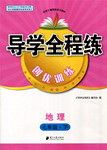题目内容
There is no doubt that adults, and even highly educated adults, vary greatly in the speed and efficiency of their reading. Some proceed (开展) very slowly throughout; others dash along (滔滔不绝) too quickly and then have to regress. Poor readers in particular may lack the ability to vary their manner of reading according to the type of reading matter and to their intentions in reading it. A good reader can move at great speed through the text of a novel or similar light reading matter. He may be able to skim a page, picking up a word or two here and there, and gain a general idea of what the text is about without really reading it. In reading more difficult material, with the intention of taking in the whole of it, he will proceed more slowly, but even then he will vary his pace, concentrating on the key words and passages, perhaps rereading them several times and pass more quickly over the remainder. A less efficient reader tends to maintain the same speed whatever the material he reads. Consequently even light reading matter gives him little pleasure because he reads so slowly. But this pace may be too fast for really difficult material which requires special concentration at difficult points.
A type of reading which necessitates (成为必要) careful attention to detail is proofreading (校正), in which the reader, in order to detect misprints in a sample print, has to notice not so much the meaning of what he reads as the exact shape and order of letters and words in the text. This is extremely difficult for most people, since they are accustomed (习惯的) to overlook such details. In fact, considerable practice is required to practice this task efficiently and it can be done only by reading very slowly, and by paying comparatively little attention to the general meaning of the text.
1. The author claims that there is a difference in reading speed——.
A. between the poorly educated and the highly educated
B. among all readers
C. among different poorly educated adults only
D. among different highly educated adults only
2. A good reader is a reader who——.
A. concentrates on the key words only
B. changes his speed according to the kind of text
C. always reads slowly but carefully
D. changes his speed according to his liking for the book
3. The last two sentences of the first paragraph mean that——.
A. a reading speed too fast for difficult material is just right for a non-serious book
B. a reading speed too slow for a non-serious book is also too slow for a difficult one
C. a reading speed too slow for a non-serious book may be too fast for a difficult one
D. a reading speed too slow for a difficult book is just right for a non-serious one
4. Proofreading is of no use unless one is prepared to——.
A. read very quickly B. pay attention to the meaning of the text
C. read very slowly D. make changes here and there
解析:
1.B。细节题。本题要求读者查找出哪些人的阅读速度有差异。文章第一句就讲明:普通人,甚至受过良好教育的人,他们之间的阅读效率及速度存在很大区别。这里的adults及highly educated adults泛指所有读者,而不管他们的教育背景如何,他们的阅读效率及速度的差异是一种客观存在的现象,故B项正确。A项中的the poorly educated在文章中未涉及;它和the highly educated不形成对比;C项和D项的poorly educated adults和highly educated adults或本文未涉及或范围太窄,偏离了作者的本意。 2.B。细节题。本题要求读者从对a good reader的描述中,总结出a good reader的定义。文章第四到六句讲:a good reader在读小说类书籍或阅读材料时速度很快,而在读较难阅读材料时,并且意欲吸收所读材料所有内容时,他的阅读速度就较慢,而且不断调整阅读方法。由此得出结论,B项正确。A项和C项讲的是不良阅读习惯;D项讲要根据个人对阅读材料的喜好确定阅读速度,而不是根据阅读材料的不同,结果偏离了作者的本意。 3.C。细节题。本题实际上要求读者根据第一段最后两句话的内涵来理解其另一种解释或表达。第一段最后两句讲:由于读得太慢,结果轻松愉快的阅读材料也几乎不能给读者带来乐趣,而在阅读有难度的阅读材料时这种速度又太快,因为有难度的阅读材料要求对难点给予特别关注。由此,C项解释正确。A、B、C三项的解释均和上述原意不符。 4.D。细节题。校对主要是检查并改正印刷错误。这种阅读方式一般是不为人们所采用的,除非你要make changes here and there(指校对稿件时的修改)。由此推断,选项D正确。选项A、B、C的内容均和本题不符。
|

 导学全程练创优训练系列答案
导学全程练创优训练系列答案